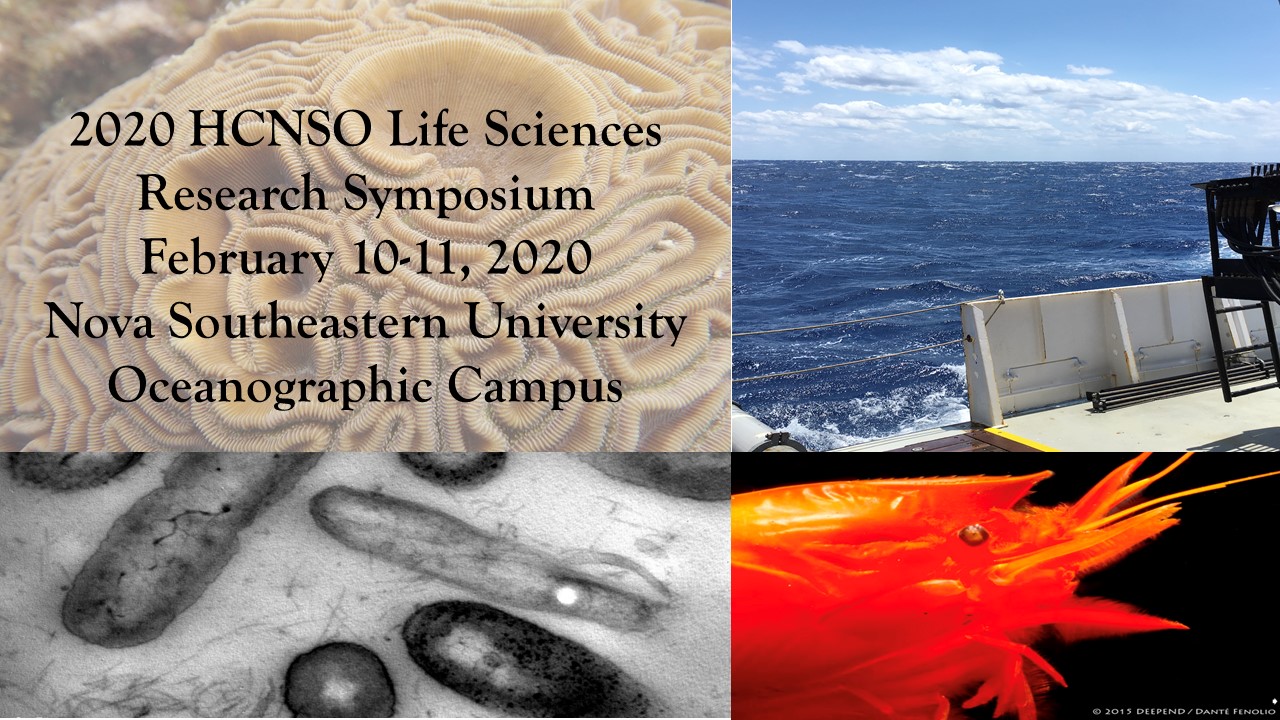Ultrastructural analysis of the effects of light on cuticular pleopod photophores in the deep-sea shrimp Janicella spinicauda
Location
HCNSO Guy Harvey Oceanographic Center Nova Southeastern University
Start
2-10-2020 3:45 PM
End
2-10-2020 4:00 PM
Type of Presentation
Oral Presentation
Abstract
With little refuge and a three-dimensional hunting ground, mesopelagic (200-1000 m) animals have evolved a variety of adaptations to avoid being easy prey. Among these are counterillumination, i.e. a silhouette camouflaged from predators below via ventrally directed bioluminescent light produced in photophore organs. Counterillumination is used extensively throughout the marine environment, but little is known about the mechanisms used to enable animals to precisely replicate the intensity and wavelength of downwelling light. A recent hypothesis suggests that photophore organs may be photosensitive due to the presence of visual opsin proteins, a component of all known visual pigments, that were discovered in photophores from several Oplophoridae shrimp species. This is the first study to investigate photosensitivity in an autogenic light organ in the deep-sea shrimp species Janicella spinicauda (Oplophoridae) by comparing the ultrastructure of unexposed, dim-light exposed, and bright-light exposed photophores. This study has found evidence of photosensitivity in cuticular pleopod photophores as our findings are consistent with well-known cellular responses of dim-light adapted crustacean compound eyes when exposed to dim and ecologically equivalent light intensities, or high and damaging light intensities.
Ultrastructural analysis of the effects of light on cuticular pleopod photophores in the deep-sea shrimp Janicella spinicauda
HCNSO Guy Harvey Oceanographic Center Nova Southeastern University
With little refuge and a three-dimensional hunting ground, mesopelagic (200-1000 m) animals have evolved a variety of adaptations to avoid being easy prey. Among these are counterillumination, i.e. a silhouette camouflaged from predators below via ventrally directed bioluminescent light produced in photophore organs. Counterillumination is used extensively throughout the marine environment, but little is known about the mechanisms used to enable animals to precisely replicate the intensity and wavelength of downwelling light. A recent hypothesis suggests that photophore organs may be photosensitive due to the presence of visual opsin proteins, a component of all known visual pigments, that were discovered in photophores from several Oplophoridae shrimp species. This is the first study to investigate photosensitivity in an autogenic light organ in the deep-sea shrimp species Janicella spinicauda (Oplophoridae) by comparing the ultrastructure of unexposed, dim-light exposed, and bright-light exposed photophores. This study has found evidence of photosensitivity in cuticular pleopod photophores as our findings are consistent with well-known cellular responses of dim-light adapted crustacean compound eyes when exposed to dim and ecologically equivalent light intensities, or high and damaging light intensities.


